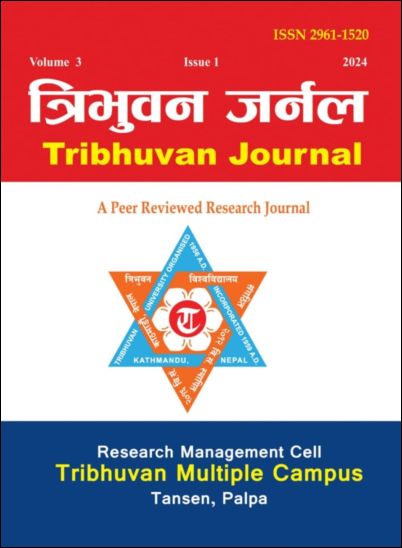Revenue Trend Analysis of Bharatpur Metropolitan City (BMC), Nepal
DOI:
https://doi.org/10.3126/tribj.v3i1.70798Keywords:
Public Governance, Revenue, Financial analysis, Local GovernmentsAbstract
The present study aims to explore a comprehensive analysis of the revenue trends with special focus on the case of Bharatpur Metropolitan City. The study adopts a quantitative research design, employing document analysis, and an observation checklist. This study presents findings over the last 13 years 2067 to 2079, focusing on three key headings: Tax related to Land and Property, Service fee and Tariff and Dividend tax. Tax related to Land and Property encompasses taxes such as property tax, Malpot tax, business tax, house rent tax and homeland registration tax it exhibited the most substantial growth. Service fee and tariff represent the total sum of service fees and tariff, including fees for Building permits, event registration, and fines, relationship certification, education fees, electricity fees and parking fees. This variable showed initial growth but also experienced fluctuations. Dividend tax includes vehicle tax, entertainment tax, and advertising tax, showing modest yet steady growth, despite having the smallest contribution, it displayed consistent growth. The study underscores the diverse contributions of these revenue sources, emphasizing the need for strategic planning to stabilize and enhance the financial health of BMC by optimizing each revenue stream’s potential.




